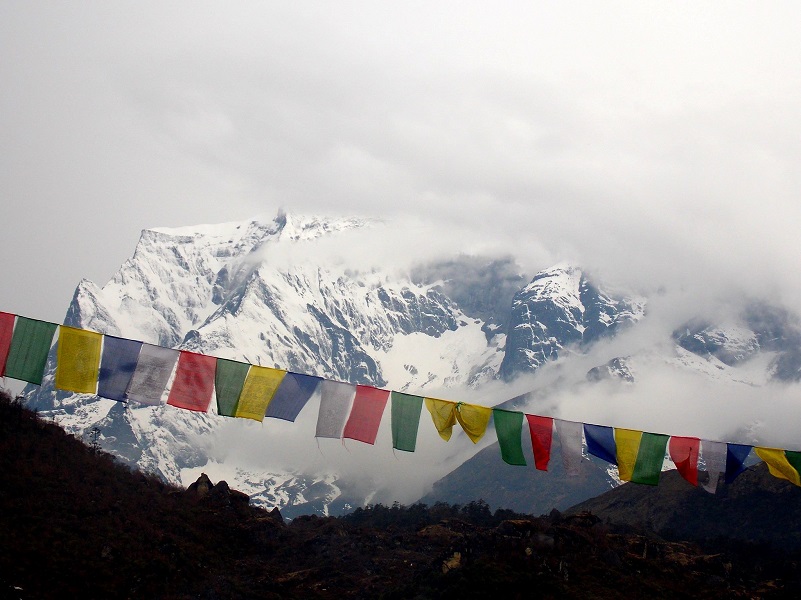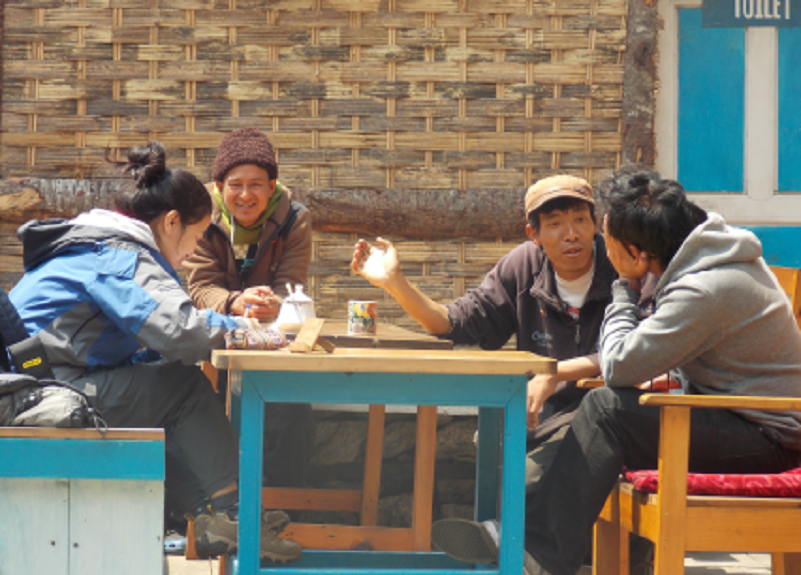Sustainable Himalayan buildings
This guest post narrated in first person by Silu Bhochhibhoya1 describes her amazing work2 on sustainable buildings in the Himalaya to which I contributed for the modelling part.

Why Himalaya
I have been interested in trekking since my childhood when my father used to take us for hiking nearby our town in Nepal. I am fascinated by the mountains, their people, their lifestyle, food, and culture. I brought this passion into my universities studies and later on into my research.
Increasing temperature in the Himalayas is creating serious impacts on this unique mountain environment. And so does the human presence. In the Himalayan region the Sagarmatha National Park is a key touristic destination due to its natural beauty. That’s also where the highest peak in the world lies: Mount Everest. In 2014 the Park received almost 37000 tourist visits and these are increasing by 3% every year. With the growing number of tourist visiting the area new buildings are being constructed to satisfy the demand for lodging.
Buildings in the park have historically been built with an ancestral Sherpa house design using locally available materials. Yet the new buildings have a modern design and use imported construction materials that allow for better insulation but have to be transported via helicopter from the capital city Kathmandu. The terrain is too difficult for road transport. It is thus unclear which of the two building types is the best one, environmentally speaking, and I wanted to find it out.
More specifically, I was interested in investigating what are the environmental and economic implications of modern versus traditional ways of building lodgings in the area. This comparison should be done considering the entire life cycle of the buildings. How are the raw materials extracted and manufactured? How is the building constructed? What about the energy use during daily activities? And the building maintenance and replacement of materials? I chose to compare three different commercial building types which are common lodging options in the Park: modern, semi-modern, and traditional.
Getting the data at high altitude
I have collected most of the data in the field during March and April 2014, via questionnaires and measurements. What I did is about 50 structured interviews with hotel owners, who were very co-operative and kind. What I asked them is the type of materials each building was made of, and whether these materials had been fetched locally, plus how much fuels and energy were used in different activities like cooking and heating. I also asked for or retrieved the price of each material and fuel used.

Then I measured each building: length, breadth, and height of doors, windows, walls, floors. This was a necessary step to quantify the amount of the materials used for the construction of each building. When I returned back to my office I made a model for each building, using a specific software and database that contain information on the environmental impact of each material. With the model I could calculate the environmental and economic impacts of lodging in three existing buildings in the Park.
Which is the best building?
Among the three chosen, the modern building showed the highest environmental impact (in terms of carbon footprint) and cost over the lifetime of 50 years. The transportation and manufacturing-related impacts of the modern building were higher than those of the traditional building, as expected. The use stage was responsible for the largest share of the impacts over the building lifetime, this showing how impacting is the energy use for different household activities such as cooking, space heating, lighting, heating water etc. These are the activities where the main improvement opportunities lie. The way forward for new construction projects in the Himalayan region is the balance between using locally available materials in the building construction while ensuring insulation and the use of renewable energy.
More data and more culture
I have collected data for 50 buildings, but only three of them were analyzed in detail due to time and resources constraints, and to keep model complexity manageable. However, the next step is comparing between more buildings and checking if the results obtained so far have a more general validity. Moreover, in my study I didn’t take into account important cultural factors that are associated with the traditional buildings. The traditional buildings embody the Parks’ cultural heritage and are a characteristic feature in the Park. Including this aspect in the analysis is an essential step towards the sustainability assessments of buildings in the Park, side by side with the environmental and economic aspects I already focused on.
-
Silu is a Nepalese researcher who just completed her PhD studies at the Department of Land, Environment, Agriculture and Forestry of the University of Padua, Italy. ↩
-
Bhochhibhoya S, Pizzol M, Achten WMJ, Maskey RK, Zanetti M, Cavalli R. Comparative life cycle assessment and life cycle costing of lodging in the Himalaya. The International Journal of Life Cycle Assessment (2016). doi:10.1007/s11367-016-1212-8 ↩